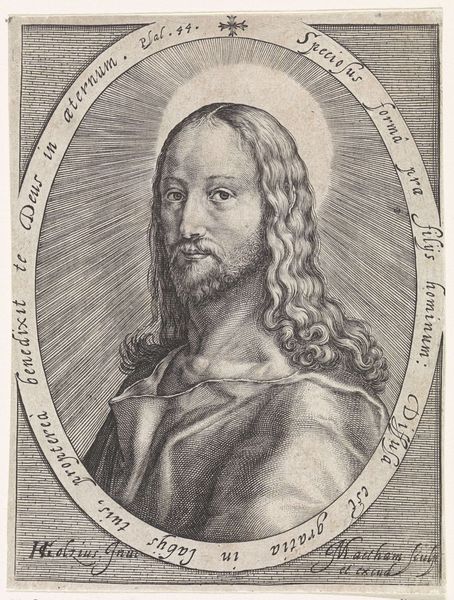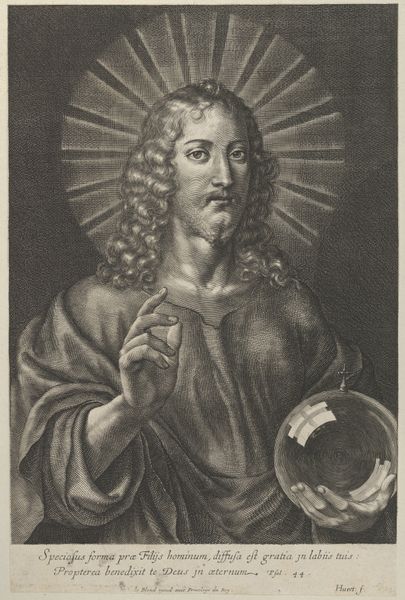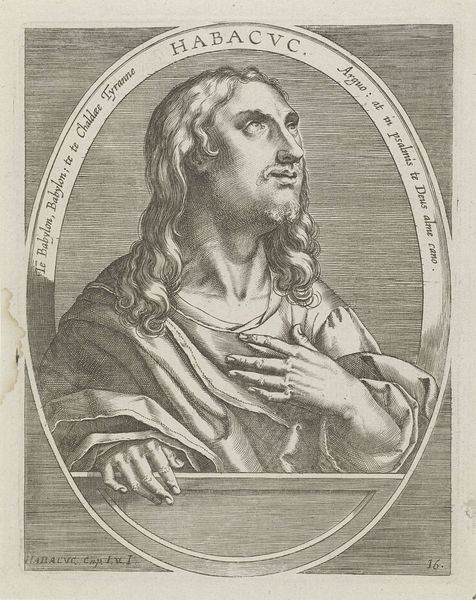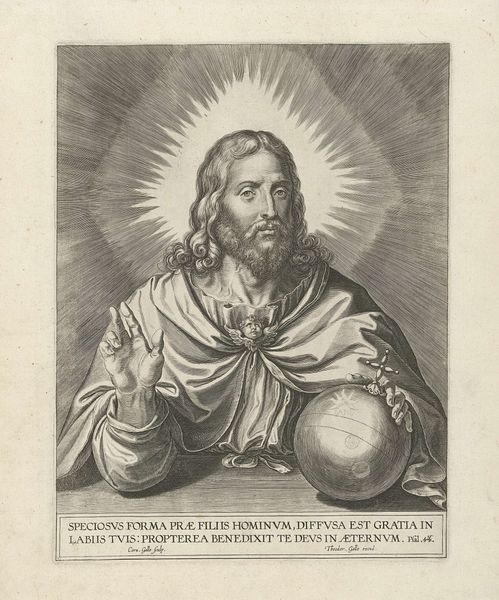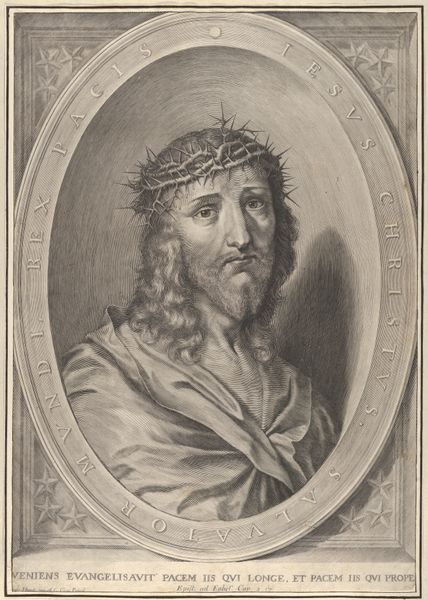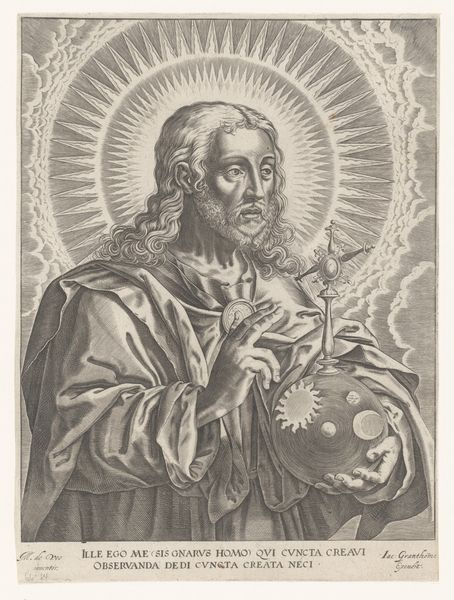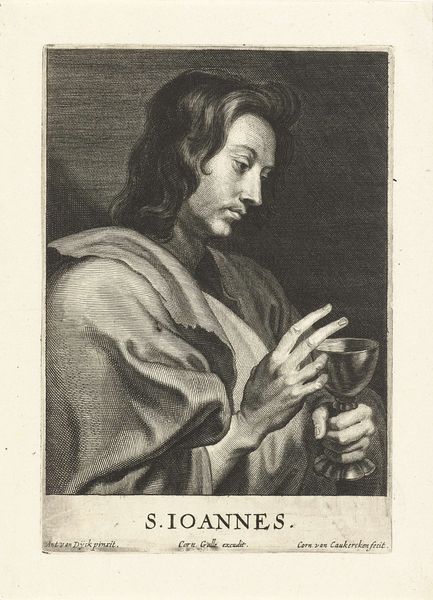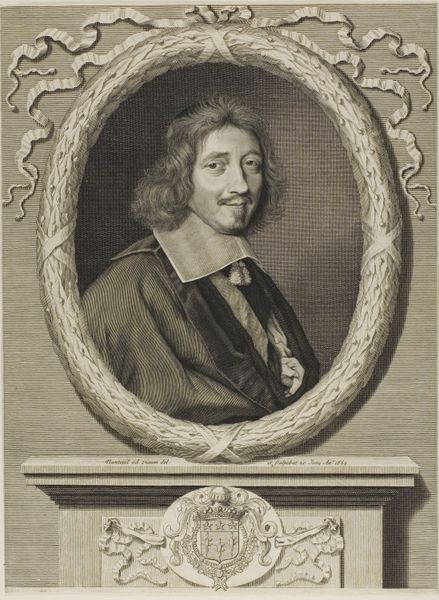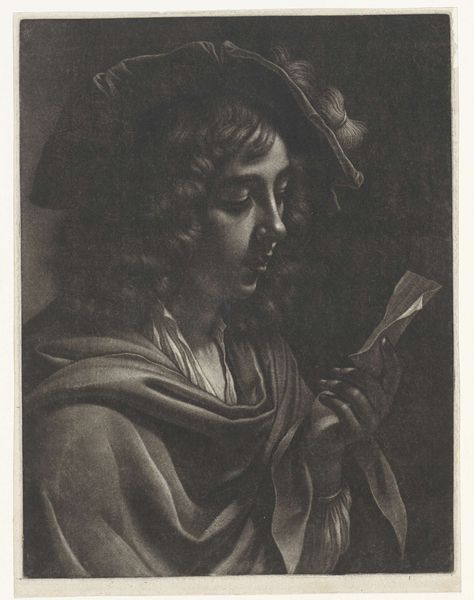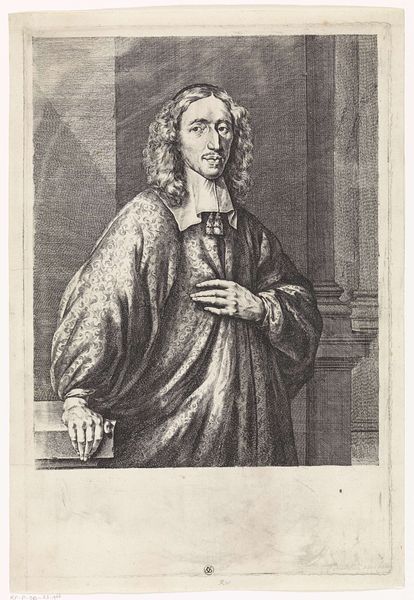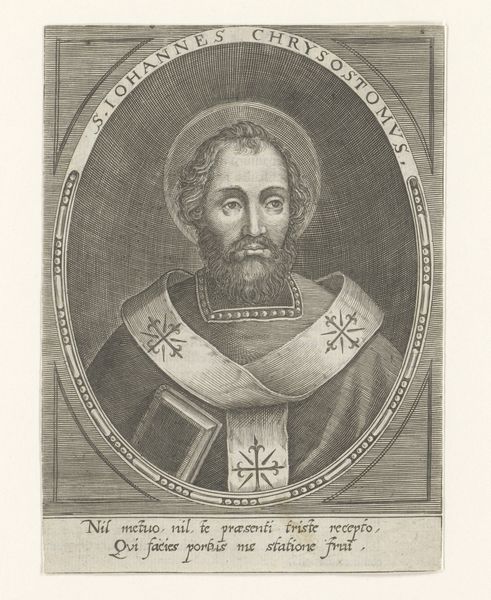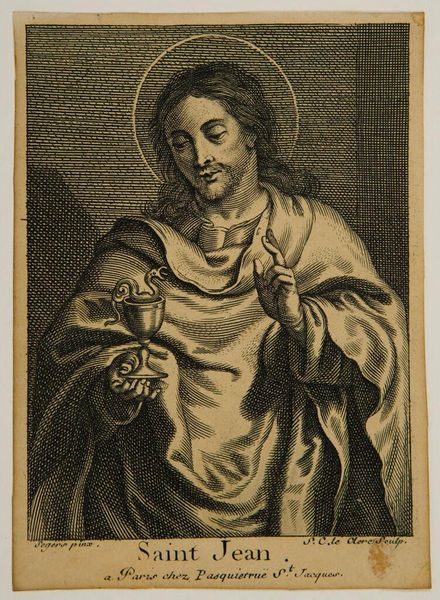
print, engraving
#
portrait
#
baroque
# print
#
figuration
#
portrait reference
#
pencil drawing
#
portrait drawing
#
history-painting
#
engraving
#
portrait art
Dimensions: height 460 mm, width 319 mm
Copyright: Rijks Museum: Open Domain
Curator: The first thing that strikes me is its incredible detail – look at how light dances on the folds of the robe. There’s something almost photographic about it, yet… otherworldly. Editor: Precisely. What you’re responding to is Egbert Van Panderen's masterful technique. This piece, “Christus met rijksappel”, dating from around 1590 to 1637, uses engraving to create incredible textural effects. The Rijksmuseum holds it, and it's such a powerful example of Baroque printmaking, particularly how religious iconography was being disseminated then. Curator: Right, Baroque… the drama, the movement! It feels almost theatrical, this Jesus. He's holding the orb, that's our Earth right, with a tiny cross on top. It feels so heavy in his hand, such a huge responsibility on his shoulders. Does that make sense? Editor: Absolutely. The orb is the symbol of earthly power, or the world, being offered - or, more accurately, surrendered - to Christ, indicated by the cross atop the globe. Given the period's colonial reach and the Counter-Reformation's focus on global conversions, this image isn't just spiritual; it's steeped in politics and power dynamics. Curator: See, I was thinking about how much our relationship with belief has changed. And then you just yanked me back into history... Editor: Because it's vital to remember art isn't made in a vacuum. Consider the gaze, too. He looks away, towards the future perhaps, or maybe assessing his dominion? It poses so many questions. Curator: Yes! So what is this future he imagines? I think it has so much hope mixed in. Editor: Perhaps the hope for salvation promised on the lower inscription. But seen through the lens of colonial expansion, one also asks: Salvation for whom, and at what cost? Curator: Goodness, I never considered it in those terms before, so thank you for helping me contextualize and unpack its themes further! Editor: And thank you for engaging with this piece so imaginatively and for showing how art history invites us all to look deeper at the complexities that shape our world.
Comments
No comments
Be the first to comment and join the conversation on the ultimate creative platform.
